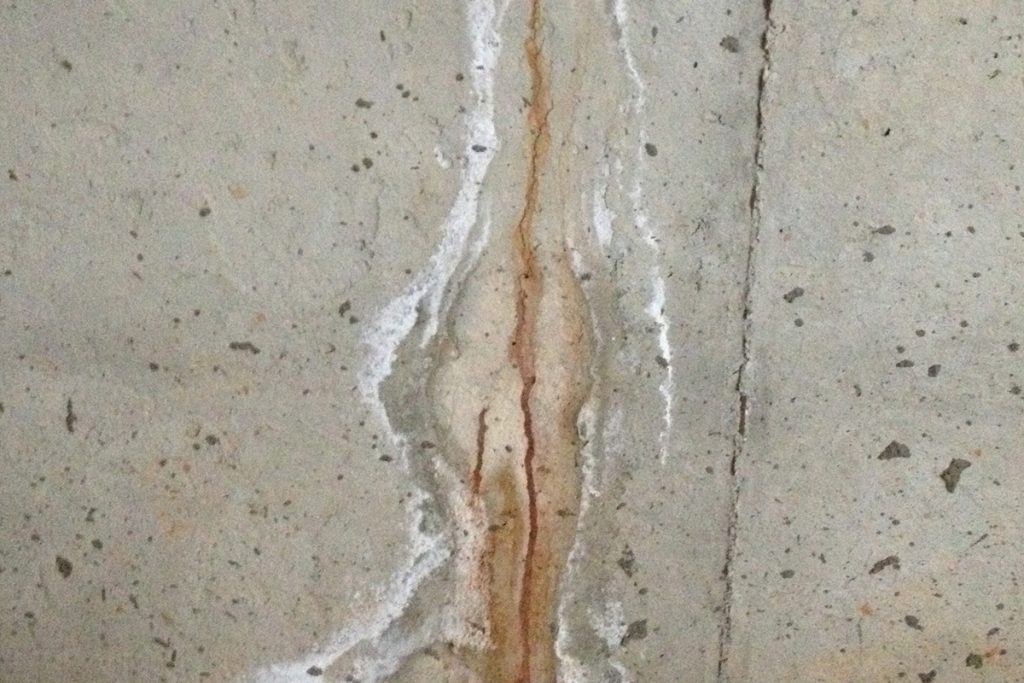In this article we discuss the reasons why newer homes have the distinct advantage of being candidates for inexpensive and quick basement crack repairs.
We consider “newer” homes to be those built since 1980. While homes built in 1980 may not be considered by some homeowners to be “newer”, we classify these homes as newer because they are typically built on poured concrete foundations (at least in the Greater Toronto Area). When it comes to foundation crack repairs, the type of foundation being repaired has a significant bearing on the cost of repairs as well as the available crack repair options. Poured concrete foundations are, by far, the easiest and cheapest foundations to repair.
Why foundations crack
Foundation cracks in poured concrete foundations are the norm. The presence of cracks does not mean that your home was built poorly; cracks actually reflect the nature of poured concrete. Essentially there are two types of cracks which develop: plastic shrinkage cracks and structural cracks.
Plastic shrinkage cracks are usually narrow (< 2mm) and occur due to the shrinkage of concrete as it cures. This shrinkage happens because the significant amount of water used to prepare the concrete for use in forming evaporates as the concrete cures; a process which can last many years, depending on the thickness of the concrete. Most foundations are 20 centimetres or 8 inches thick and generally take up to 5 years to cure fully.
Structural cracks, on the other hand, while not necessarily problematic, occur due to settlement, overloading of the foundation, and damage to the foundation caused during backfilling during home construction. Structural foundation cracks are almost always wider than shrinkage cracks. The wider the crack, the more serious it is; in fact, Tarion has established that cracks in excess of 6mm wide are structural cracks.
Having inspected thousands of basements over the years, settlement cracks are not the most common kind of foundation crack that we find; the most common cause of cracking is plastic shrinkage. These cracks are usually caused by insufficient compaction of the soil beneath the footing supporting the foundation walls (often from over excavation when the house is being built). In some instances, soil erosion beneath the footing (usually due to downspouts discharging into weeping tile systems), and backfilling before the concrete has reached full strength (usually 30 days) cause settlement. From time to time, heavy machinery actually hits the foundation walls, especially during backfilling and when pools are being installed because of the high levels of machinery traffic between neighbouring homes.
Foundation crack repair methods
There are a few available crack repair methods; before we get into that one must distinguish between a crack repair and a waterproofing repair. A crack repair, as its name implies, involves actually fixing the crack. A waterproofing repair is concerned primarily with preventing a crack from leaking.
Foundation cracks can only be repaired by filling them, while cracks are generally “waterproofed” by patching them internally (short term solution), or by excavating the foundation at the crack location and placing a barrier/patch over the crack to prevent groundwater penetration (more effective and long lasting than patching on the interior).
There is yet another crack waterproofing method on the market which consists of placing an impermeable barrier on the interior side of a crack and creating a drainage provision for the water that continues to leak through the crack – a hole in the floor allowing water to drain into the gravel beneath the basement floor. This should be avoided. Why? Check out this hyperlink on high water tables.
Check out our comprehensive table of basement waterproofing methods.
How basement cracks should be repaired
There is really only one way to repair a foundation crack – fill the crack so that it no longer exists; after all, a crack is a void in the foundation wall. All other crack repair methods pertain solely to the waterproofing aspect of crack repair.
Basement cracks can be repaired by filling them with one of two resins: epoxy or polyurethane. While this crack filling is done to repair cracks, the methods also constitute waterproofing repairs. Cracks are filled by injecting the resins, under pressure, into the crack. Click on this link for more information on crack injection.
We are generally not in favour of external crack repairs simply because the crack is not at all repaired; in fact, external procedures are simply patches over the crack. Furthermore, the cost to excavate a wall to repair a crack is far more expensive than crack injection from inside the home, and much less destructive as well.
Note: If a foundation crack happens to be located behind the electrical panel, excavation may be the only viable option.
What it costs to repair foundation cracks
At the beginning of this article we mentioned that poured concrete foundations had the distinct advantage of being inexpensive and quick to repair. In fact, a crack injection is usually completed in 2-3 hours and generally costs between $350 and $475. If a crack must be excavated and waterproofed externally, expect to pay $1000 – $1500 per crack.
Want the highest quality injection?
